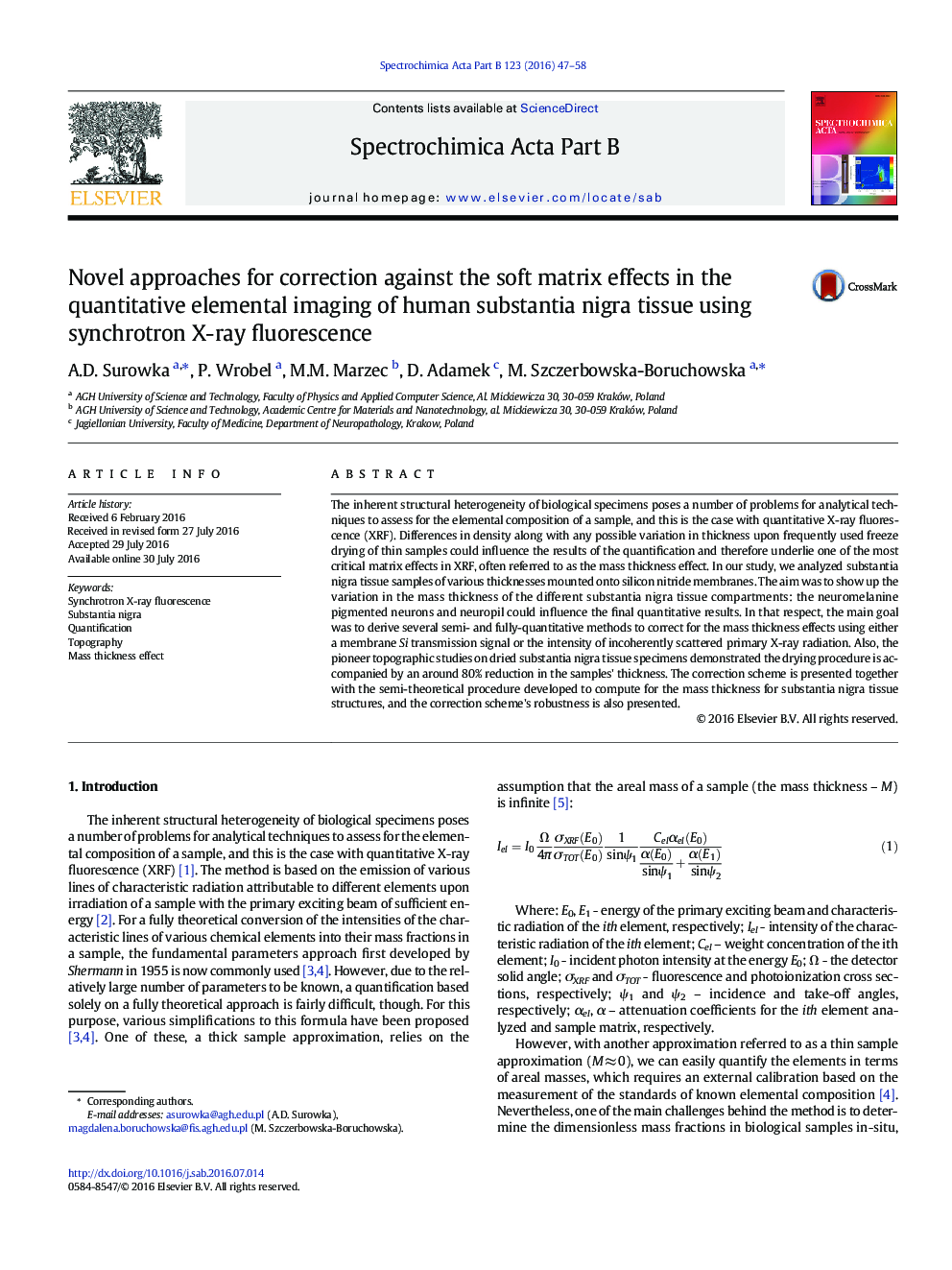| Article ID | Journal | Published Year | Pages | File Type |
|---|---|---|---|---|
| 7673987 | Spectrochimica Acta Part B: Atomic Spectroscopy | 2016 | 12 Pages |
Abstract
The inherent structural heterogeneity of biological specimens poses a number of problems for analytical techniques to assess for the elemental composition of a sample, and this is the case with quantitative X-ray fluorescence (XRF). Differences in density along with any possible variation in thickness upon frequently used freeze drying of thin samples could influence the results of the quantification and therefore underlie one of the most critical matrix effects in XRF, often referred to as the mass thickness effect. In our study, we analyzed substantia nigra tissue samples of various thicknesses mounted onto silicon nitride membranes. The aim was to show up the variation in the mass thickness of the different substantia nigra tissue compartments: the neuromelanine pigmented neurons and neuropil could influence the final quantitative results. In that respect, the main goal was to derive several semi- and fully-quantitative methods to correct for the mass thickness effects using either a membrane Si transmission signal or the intensity of incoherently scattered primary X-ray radiation. Also, the pioneer topographic studies on dried substantia nigra tissue specimens demonstrated the drying procedure is accompanied by an around 80% reduction in the samples' thickness. The correction scheme is presented together with the semi-theoretical procedure developed to compute for the mass thickness for substantia nigra tissue structures, and the correction scheme's robustness is also presented.
Related Topics
Physical Sciences and Engineering
Chemistry
Analytical Chemistry
Authors
A.D. Surowka, P. Wrobel, M.M. Marzec, D. Adamek, M. Szczerbowska-Boruchowska,
